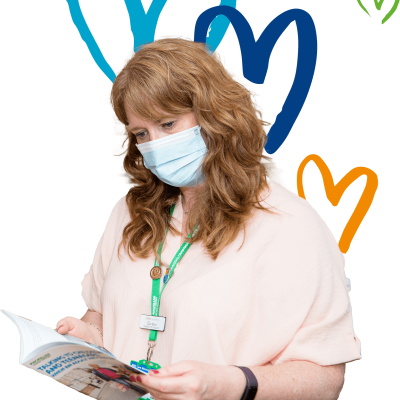The Ophthalmic Imaging team supports all sub specialties within the Eye Care Centre by carrying out a number of different tests which are used to help measure, diagnose, monitor and treat patients’ eye conditions.
These are the most frequently used ophthalmic tests:
- Optical Coherence Tomography (OCT) – this is a non-invasive test that scans the tissues of your eye and records any unusual changes. Your pupil will need to be dilated for this test.
- Humphreys Visual Fields – The Humphrey Visual Fields machine, also known as the Humphrey Field Analyzer (HFA), is a diagnostic device used in ophthalmology to assess a person's visual field. It helps detect and monitor conditions that affect the peripheral vision, such as glaucoma and neurological disorders. The machine presents a series of light stimuli at various locations in the person's visual field, and the patient responds to indicate when they see the lights. This information is then analysed to create a map of the person's visual field, assisting in diagnosis and treatment planning.
- Fluorescein Angiography (FFA) and Indocyanine Green Angiography (ICG) – Angiographic tests are used to measure the blood flow through the eye. A dye is injected into a vein in your arm and its progress through the vessels of the eye is recorded using a retinal camera. Your pupil is dilated to enable a better image of the eye. The digital images that are produced can then be assessed for any abnormalities.
- Optical Coherence Tomography Angiography (OCT-A) is an advanced imaging technique used in ophthalmology to visualise blood vessels within the retina and choroid of the eye. It provides detailed, non-invasive images of the microvasculature, allowing for the assessment of blood flow patterns and the identification of vascular abnormalities.
OCT angiography uses the principles of OCT to capture high-resolution cross-sectional images of the eye. By detecting motion contrast between flowing blood cells and surrounding tissues, it can create detailed maps of blood vessel networks without the need for injecting dyes or contrast agents. It has become a valuable tool in the diagnosis, monitoring, and management of various retinal and choroidal vascular conditions, including macular degeneration, diabetic retinopathy, and retinal vascular occlusions.
- Colour Fundus Imaging and Clinical Photography – Color fundus imaging, also known as color fundus photography or fundus imaging, is a diagnostic technique used to capture detailed images of the back of the eye, specifically the retina and its blood vessels. It is a common procedure in ophthalmology and is useful for assessing various eye conditions and monitoring eye health. Your pupil will need to be dilated for this procedure.
- Tonometry – Eye tonometry is a diagnostic procedure used to measure the intraocular pressure (IOP), which is the pressure inside the eye. It is an importnat test in the evaluation of various eye conditions, particularly glaucoma. There are various methods of tonometry, but the most common one is known as applanation tonometry, a small device called a tonometer is used to gently touch the cornea and measure its resistance to indentation. This measurement provides an estimate of the IOP.
Another method of tonometry is called non-contact tonometry. In this technique, a puff of air is directed towards the eye, and the device measures the change in the cornea's shape caused by the air puff to calculate the IOP. - Corneal Topography - This diagnostic technique is used to map the surface curvature of the cornea, which is the clear, front part of the eye. Corneal topography provides detailed information about the shape, elevation, and curvature of the cornea. It helps in the diagnosis and management of various eye conditions, such as astigmatism, keratoconus (a progressive thinning and bulging of the cornea), corneal dystrophies, and irregular corneal surfaces.
Who will I see?
The department runs many clinics to provide this extensive support service throughout the Eye Care Centre. It is run as an outpatient service, where you will see one of the departments Ophthalmic Science Practitioners, consisting of Ophthalmic Photographers, and Ophthalmic Technicians who will explain and perform the tests that have been recommended for you. Your results will be assessed by the specialist clinician looking after you. In some cases this is done on the day, however, we also run a number of outpatient assessment clinics whereby we carry out a series of tests, which are assessed at a later date.

